A wastewater treatment system for a country house or summer cottage, which does not need to spend time on frequent maintenance and pumping out of human waste products, makes living in a house more comfortable. Mini sewage treatment plants are divided into several types, each with its own individual characteristics, advantages and disadvantages.
The principle of operation and the device of local treatment facilities for a private house
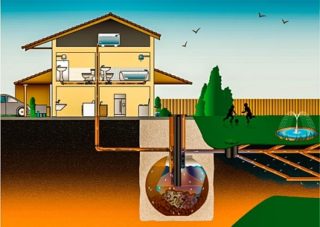
Septic tanks and treatment facilities for summer cottages and country houses are called local treatment systems (VOC). These are modern designs that are equipped with special volatile equipment, pumping stations and other additional components. By types of treatment facilities are:
- Septic tanks - a structure consisting of one tank, equipped with a partition inside. This equipment is compact in size and everything you need to work efficiently. With their help, you can sludge household and household waste. The design is additionally equipped with a filtration system.
- An aeration tank is an open rectangular container, in which the settling and purification of household waste is carried out. These innovative designs are capable of trapping even heavy particles, grease and oil products. The aeration tank is installed at the construction stage of the water supply and sewerage system. Visually, the design has compact dimensions and is built into the cleaning system itself.
- The biofilter is an integral part of the first two designs. It is actively used to cleanse the local sewer line, since due to the large number of special bacteria and microorganisms, deep purification of effluents is carried out.
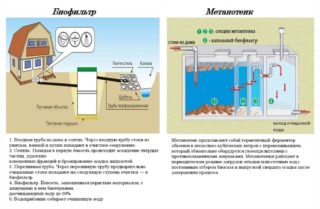
Each system has four stages of household waste purification - mechanical, biological, physicochemical and additional purification.
- The task of machining is to perform the functions of primary centralized sewer mains. This stage is accompanied by the collection of foreign objects. Further, all the garbage is penetrated into special compartments, where it is shredded. The clarified liquid that remains after sorting foreign objects flows into the next tank, where fats are eliminated.
- The purpose of biological treatment is to convert sewage into water using a specific combination of bacteria and microorganisms. This stage also includes several stages of cleaning. The essence of the work is the elimination of ammonium nitrogen, nitrates, nitrites and other harmful substances from the liquid.
- The physicochemical stage has much in common with the previous stage. The chemicals neutralize any remaining contaminants that bacteria cannot remove. After passing the physico-chemical stage, the water becomes transparent and clean.
- Post-treatment is the last stage when pure, clear water becomes 100% recyclable. This stage includes disinfection and filtration.
The most effective way of cleansing is considered to be biological.
Criteria for the selection of autonomous treatment facilities
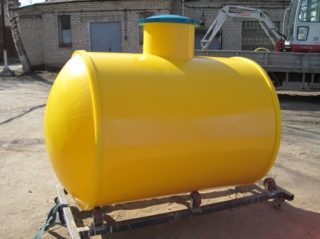
There are many factors to consider when choosing a VOC. The main selection criteria:
- Budget.If homeowners have limited financial resources, it is better to give preference to a septic tank. Its cost is lower than that of VOCs; it does not require large expenditures in maintenance.
- Feature of groundwater. If the groundwater level at the site is high, the installation of a septic tank is impossible, since it will not be possible to additionally install purification equipment. In this case, the superiority of local treatment facilities is obvious - at the outlet the water will be clean.
- Features of electricity supply. If there is a regular power outage or power surges, it is better not to purchase an autonomous sewage system. When the entire system stops, filters fail and the entire microflora perishes. Repair and refueling with microflora are procedures that require tangible financial investments.
- Seasonal accommodation. If the homeowners do not live in the house all year, it is better to give preference to a septic tank. Prolonged interruptions in work negatively affect the performance of the treatment plant.
Having analyzed these points, you can easily give preference to one or another equipment.
AOC design
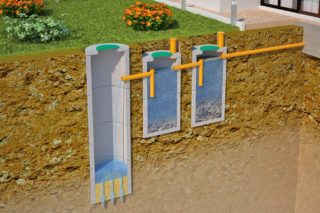
The most common treatment plant in country houses is a septic tank. It is a sealed container and, in fact, is only a small part of an integrated system for the purification of household waste.
The relevant departments have developed rules for the installation and use of such structures on personal plots. When designing a system, equipment is placed at a distance of at least 5 meters from the foundation of a house and other structures and at least 20 meters from a well or well.
Factors that must be taken into account when designing treatment facilities in the backyard plots of country houses and summer cottages:
- The number of people living in the house. Based on the number of inhabitants, the required capacity can be calculated. The more people and the more often they leave household waste, the more and more efficient the system is required.
- The total area of the backyard and the area for the installation of equipment. As a rule, self-contained sewage treatment plants require a lot of space.
- Volley collection - the volume of waste that can be recycled by equipment.
- Availability and characteristics of power supply. Systems require constant access to the mains to keep them running smoothly and efficiently.
- The productivity and capacity of the equipment, characterized by the volume of processed waste per unit of time.
- The depth of the sewer main. In this case, it is important to analyze all the design features of the equipment.
To draw up a project, it is recommended to contact construction companies, which immediately take into account all the necessary subtleties and nuances.
Installation steps
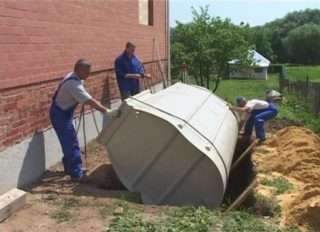
At the end of the preparatory work, it remains to build and implement a treatment plant. As a rule, it takes 2 days to install the entire system with two people.
Stages of installation of cleaning equipment:
- Find a place for equipment, mark on the site.
- Make a depression in the soil to match the dimensions of the station.
- Lower equipment into the ground.
- Install sewer pipes.
The containers should be underground, only the lid remains on the surface. In this case, it is worth taking care of the access of air through the holes of the purification system.








